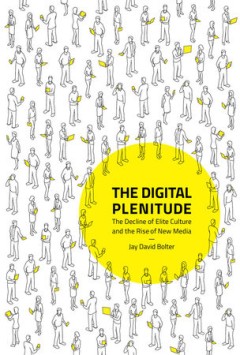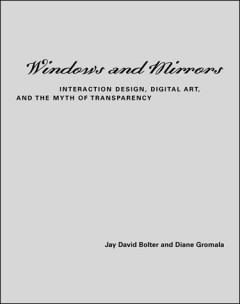Filter by

The digital plenitude :the decline of elite culture and the rise of new media
How the creative abundance of today's media culture was made possible by the decline of elitism in the arts and the rise of digital media. Media culture today encompasses a universe of forms--websites, video games, blogs, books, films, television and radio programs, magazines, and more--and a multitude of practices that include making, remixing, sharing, and critiquing. This multiplicity is so …
- Edition
- -
- ISBN/ISSN
- 9780262352505
- Collation
- 1 online resource (232 pages).
- Series Title
- -
- Call Number
- -

https://direct.mit.edu/books/book/2413/Windows-and-MirrorsInteraction-Design-…
The experience of digital art and how it is relevant to information technology.In Windows and Mirrors: Interaction Design, Digital Art, and the Myth of Transparency, Jay David Bolter and Diane Gromala argue that, contrary to Donald Norman's famous dictum, we do not always want our computers to be invisible "information appliances." They say that a computer does not feel like a toaster or a vacu…
- Edition
- -
- ISBN/ISSN
- 9780262268998
- Collation
- 1 online resource (xi, 182 pages) :illustrations.
- Series Title
- -
- Call Number
- -

Reality media :augmented and virtual reality
How augmented reality and virtual reality are taking their places in contemporary media culture alongside film and television. This book positions augmented reality (AR) and virtual reality (VR) firmly in contemporary media culture. The authors view AR and VR not as the latest hyped technologies but as media--the latest in a series of what they term "reality media," taking their places alongsid…
- Edition
- -
- ISBN/ISSN
- 9780262366250
- Collation
- 1 online resource (248 pages).
- Series Title
- -
- Call Number
- -
 Computer Science, Information & General Works
Computer Science, Information & General Works  Philosophy & Psychology
Philosophy & Psychology  Religion
Religion  Social Sciences
Social Sciences  Language
Language  Pure Science
Pure Science  Applied Sciences
Applied Sciences  Art & Recreation
Art & Recreation  Literature
Literature  History & Geography
History & Geography